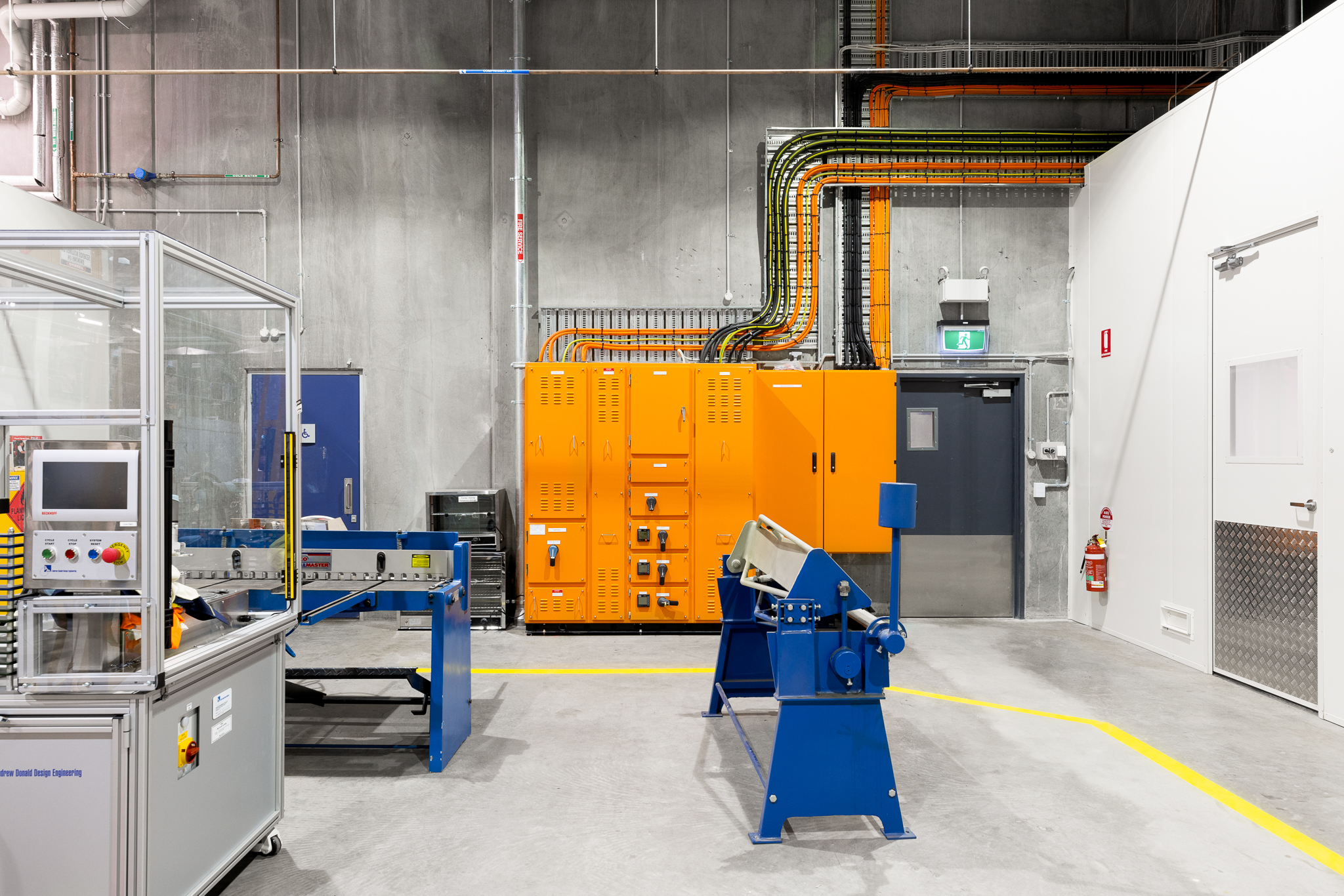A series on designing for the tech industry – Part Three
As the climate crisis accelerates, the need for clean, scalable, and locally manufactured energy solutions has never been more urgent. In Australia, that challenge is being met by companies like RayGen, whose work offers a homegrown solution to clean energy challenges, combining local manufacturing with forward-thinking solar technology. RayGen, an Australian solar technology company, required a facility to support the precise assembly of its PV Ultra modules: highly efficient systems that co-generate electricity and heat, 4000 times more powerful than typical solar panels.
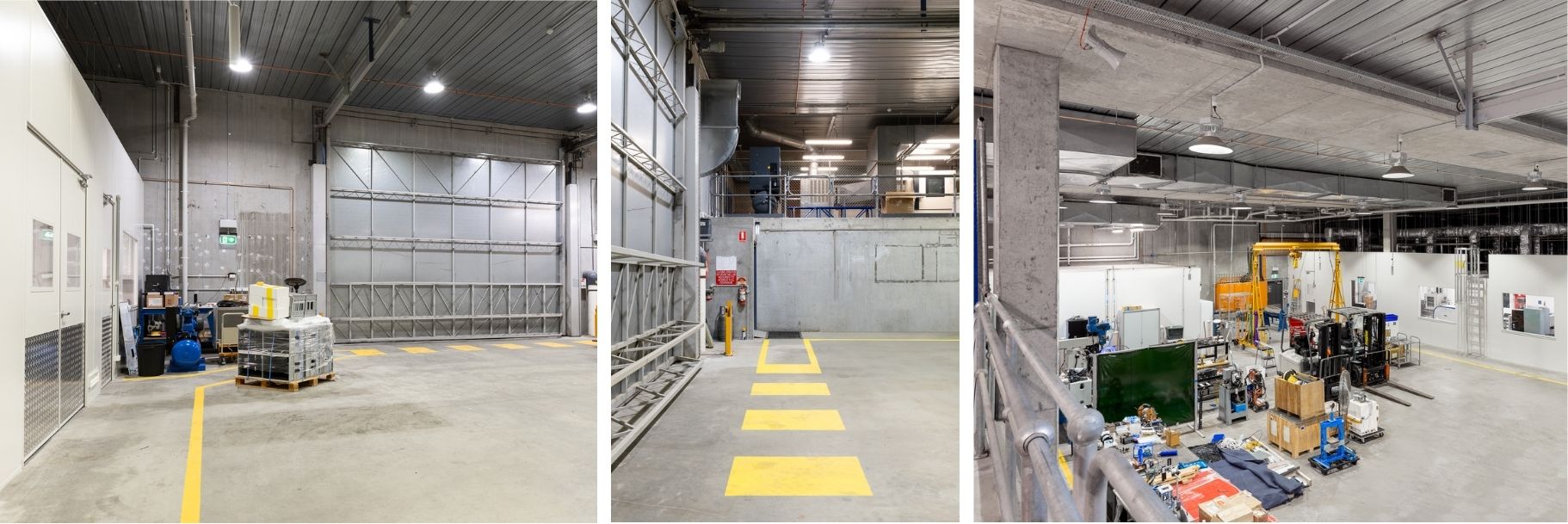
Above: loading dock & warehouse.
Venko transformed an existing commercial building into an advanced manufacturing facility tailored to RayGen’s needs. The facility includes cleanrooms, a wet room, warehouse zones, and a dedicated materials handling area. It was designed to support the careful assembly and testing of sensitive equipment within a tightly controlled environment, while remaining flexible to accommodate future needs.
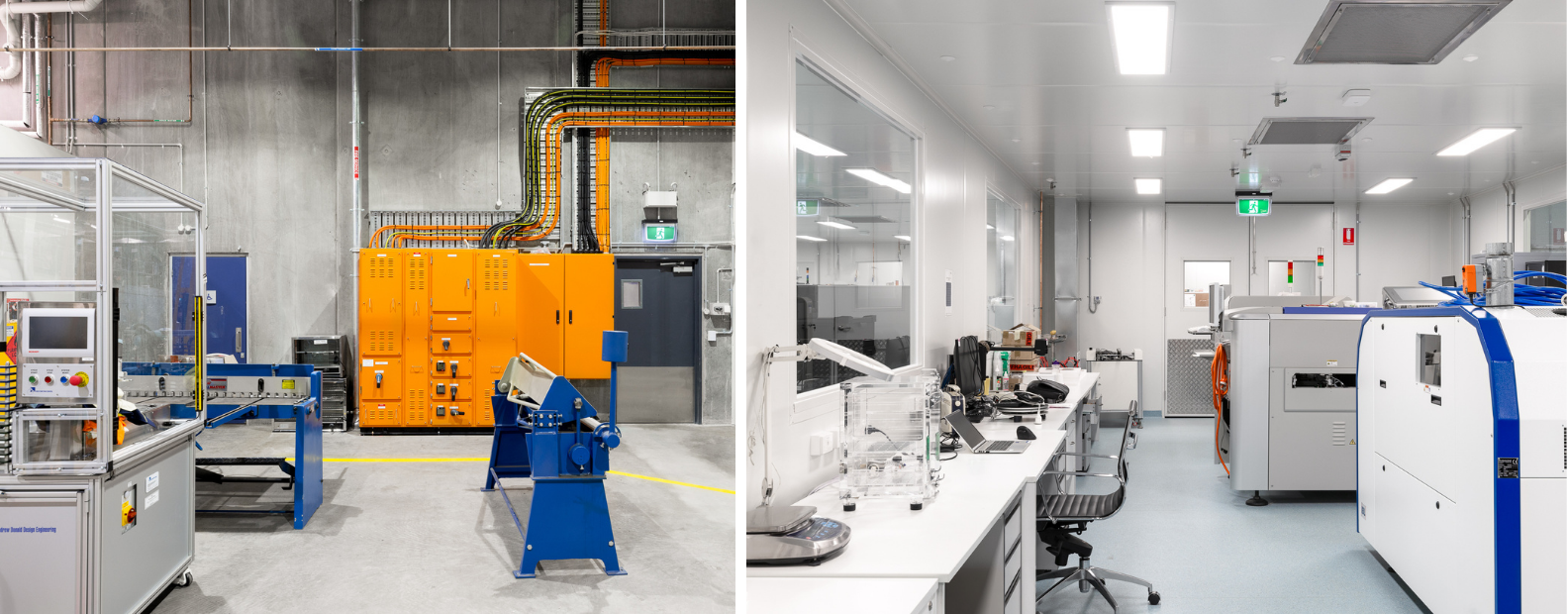
Above: Workshop & development space.
The design accommodates 58 pieces of specialist equipment, each with distinct spatial, operational, and service requirements. Venko worked closely with RayGen and our delivery partner FDC to coordinate layouts and services early, often stepping in to clarify requirements even before equipment specifications were finalised.
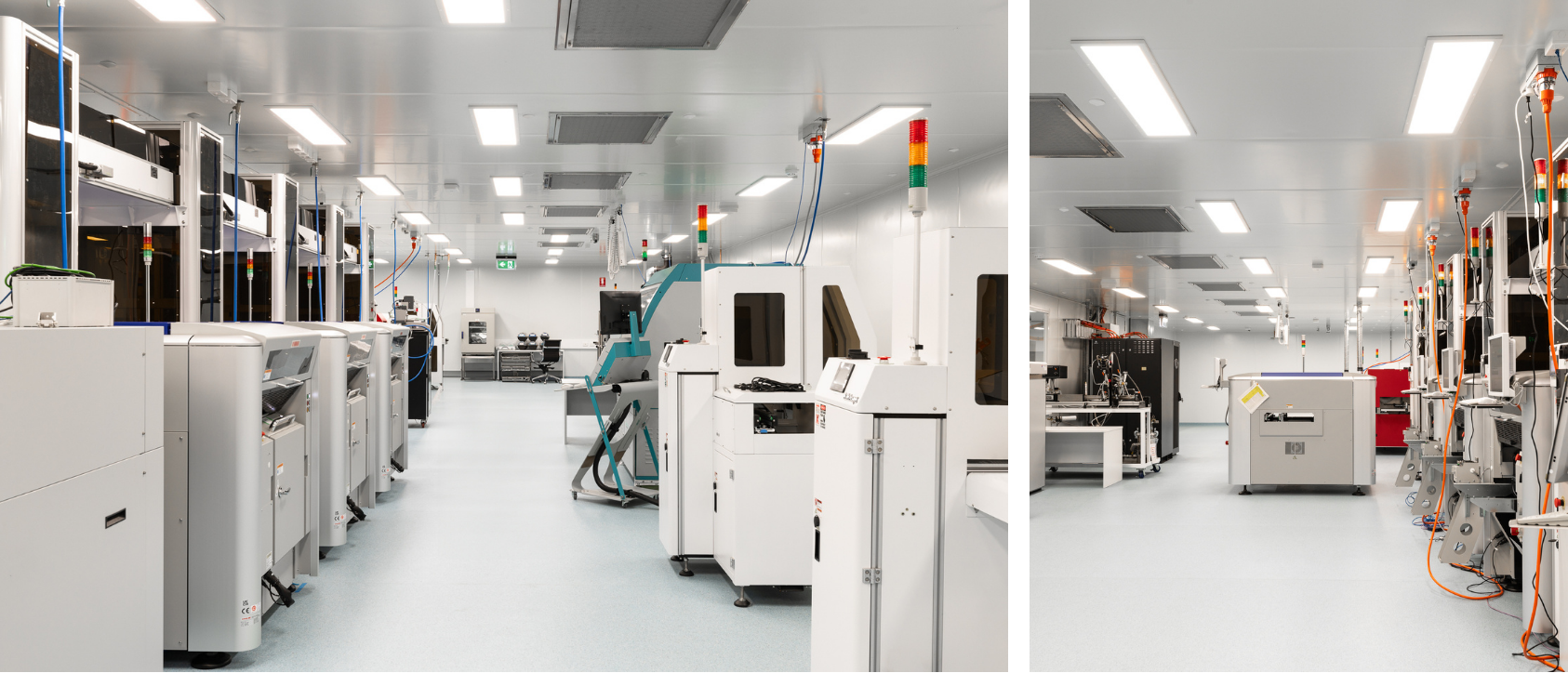
Above: clean room.
Strategically positioned at the heart of the facility is the cleanroom: a space where air quality, temperature, and humidity are regulated to prevent contamination. Cleanrooms like this are common in advanced tech industries, from electronics to biomedical manufacturing, where even microscopic particles can compromise the integrity of processes and components. For RayGen, it enables the precise handling and testing of their solar-technology without interference. The spatial layout was carefully planned to support production flow, service access, and clarity of movement, delivered under a fast-paced, highly detailed brief.
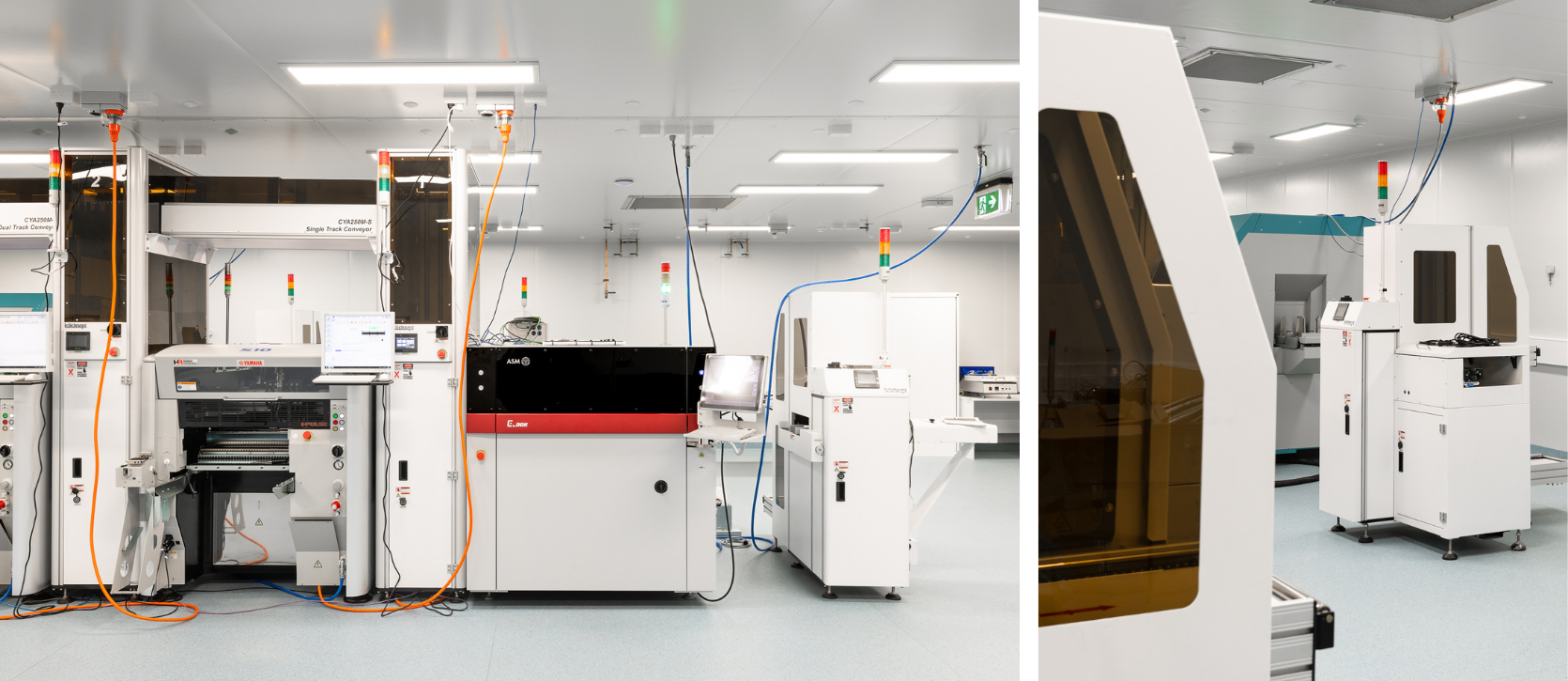
Above: clean room.
RayGen’s facility shows that good design isn’t just about how a space looks, but how well it works. In an environment where every detail matters, the role of design is to support accuracy, efficiency, and future-focused technology.

